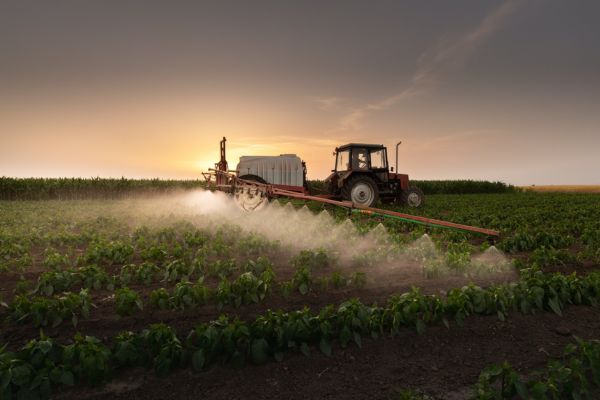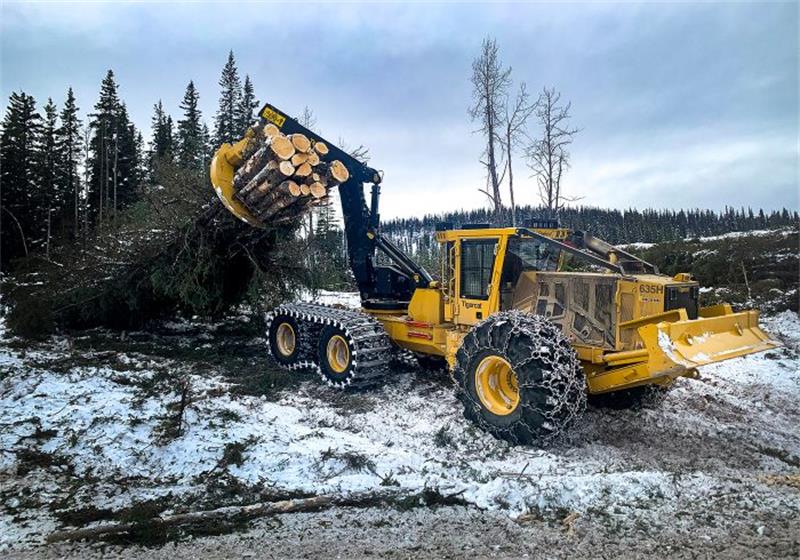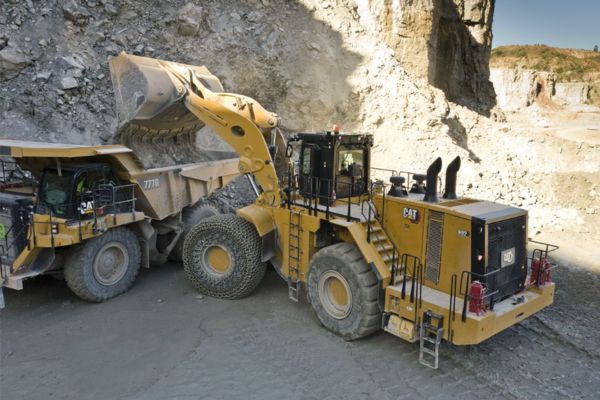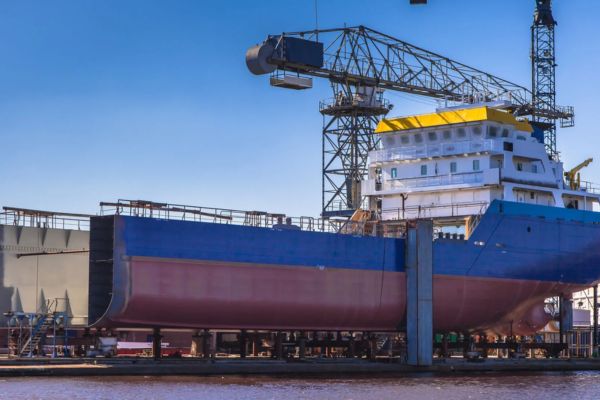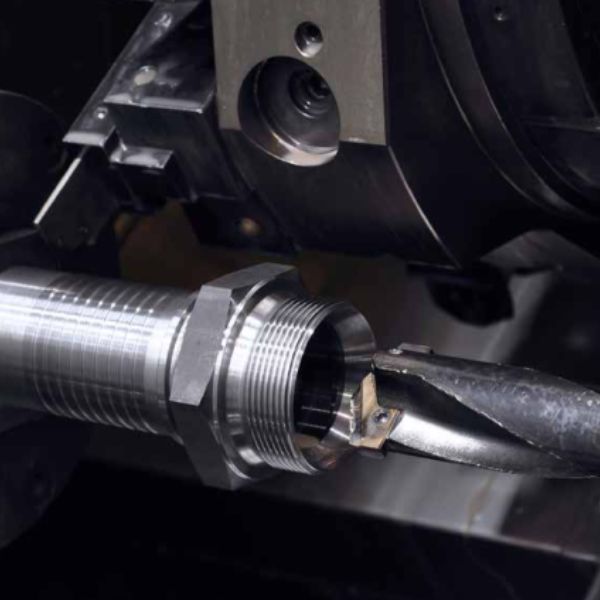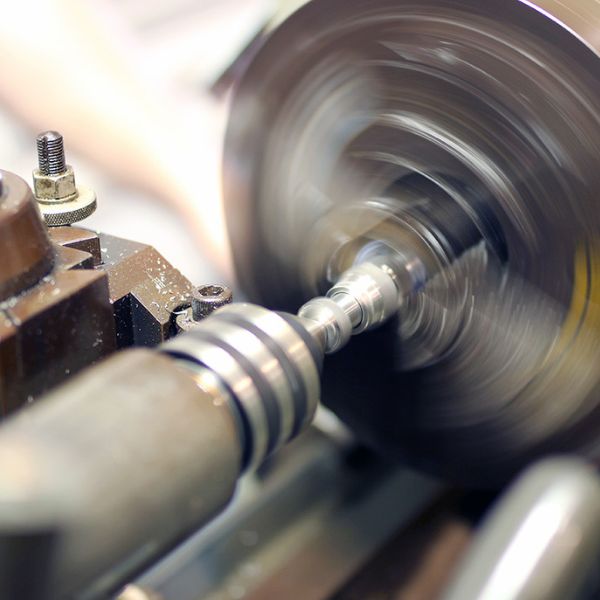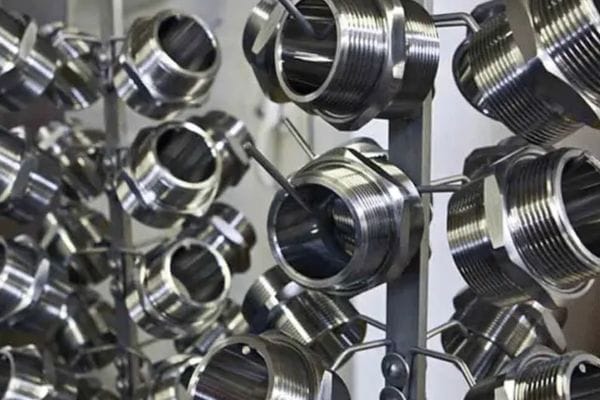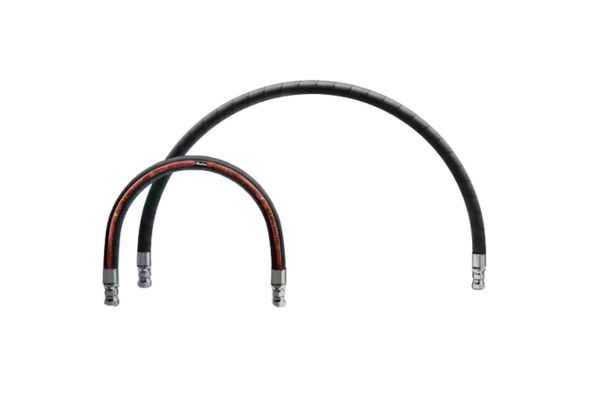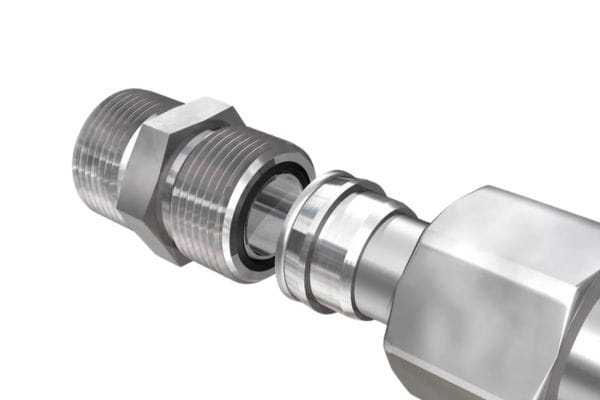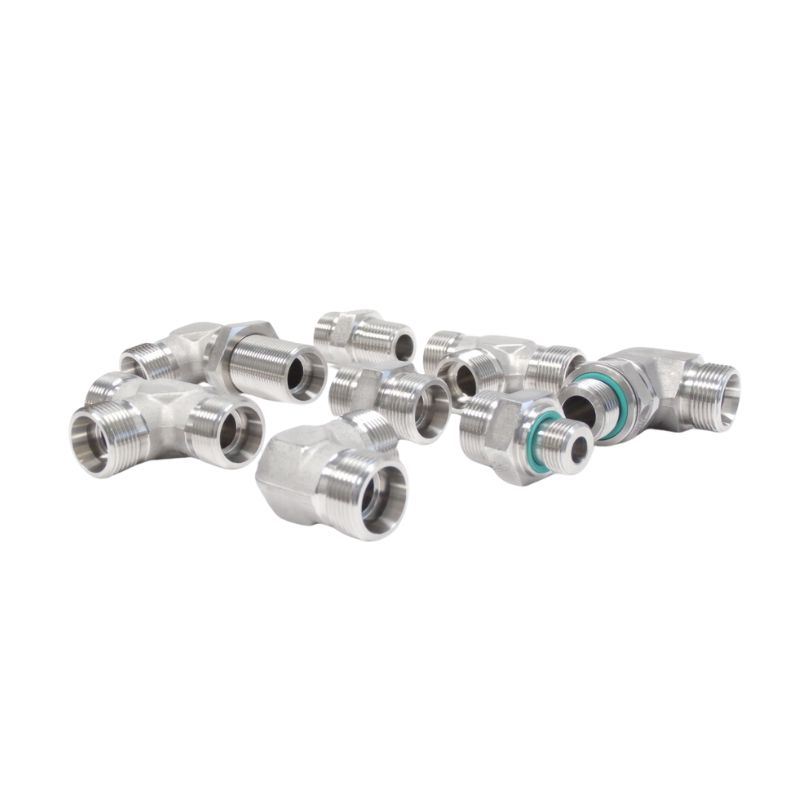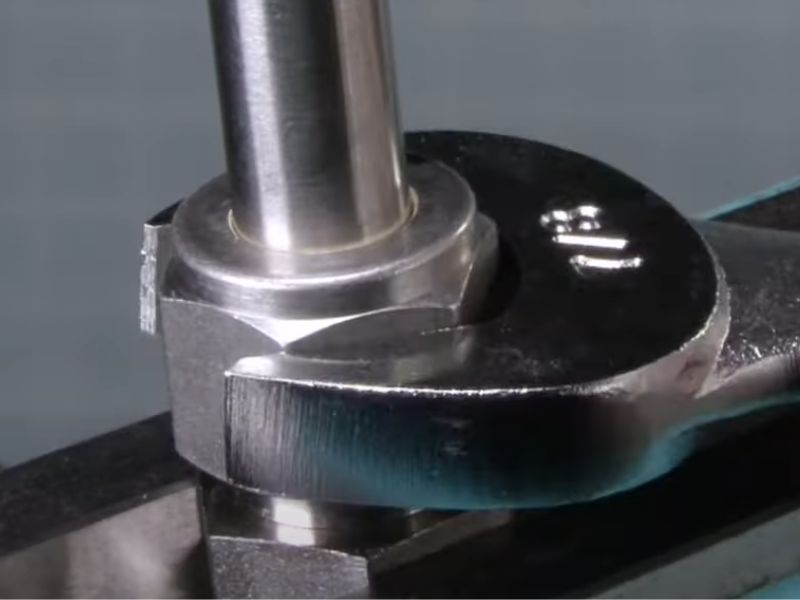Selecting the wrong material for a hydraulic fitting is a costly mistake. A part that corrodes or cracks under pressure not only causes leaks and expensive downtime but also poses a serious safety risk to your equipment and personnel.
The best material is determined by your specific application’s pressure, temperature, fluid compatibility, and corrosive environment. Carbon steel is the versatile workhorse, stainless steel is the champion of corrosion resistance, and brass serves specialized low-pressure roles. Matching the material to the job is critical.
Why is Carbon Steel the Default Choice?
When you think of a hydraulic fitting, you are likely picturing an object made of steel. There is a good reason why this material dominates the industry.
Carbon steel is the industry standard because it offers the best combination of high strength, excellent machinability, and low cost. When properly plated, it provides good corrosion resistance for the majority of hydraulic applications, making it the most versatile and economical choice.
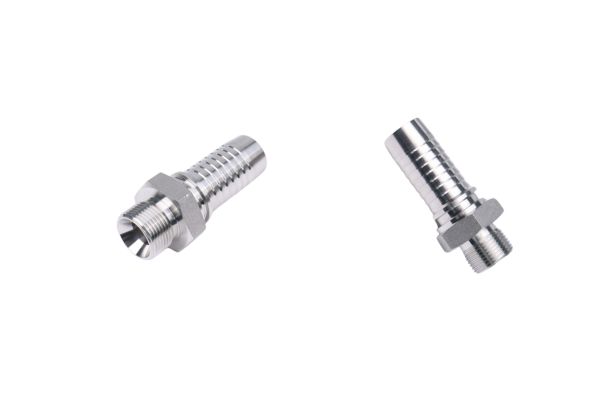
For most general-purpose industrial and mobile equipment, there’s no need to look further than carbon steel. Its ability to handle high pressures safely makes it suitable for demanding hydraulic work. The low material cost allows us and other manufacturers to produce them in huge volumes, keeping prices competitive for you. It’s the reliable, foundational material upon which most hydraulic systems are built.
What Makes It So Strong and Versatile?
The most common material we use is medium-carbon steel, such as Grade 1045 (or 45# steel in China). This grade is chosen for its ideal properties. It is strong enough to easily contain pressures of 5000 PSI or more, yet it is not so hard that it becomes brittle or difficult to machine. This balance allows for fast, precise manufacturing on CNC machines.
How Does Plating Provide Protection?
A bare carbon steel fitting would rust in days or even hours. The key to its longevity is a protective plating layer. The most common is Trivalent Zinc, which is RoHS compliant. This plating acts as a sacrificial layer; in a corrosive environment, the zinc corrodes first, protecting the steel underneath. For harsher environments, we can apply thicker plating or advanced Zinc-Nickel alloys. This plating is essential. It’s what transforms a strong piece of steel into a durable hydraulic component ready for real-world use.
When Should You Upgrade to Stainless Steel?
Your equipment is destined for a coastal region, a chemical plant, or a food processing facility. You know that a standard plated fitting will quickly turn into a rusty liability.
You should upgrade to stainless steel whenever the fitting will be exposed to significant moisture, salt, or corrosive chemicals. While it has a higher initial cost, stainless steel’s built-in corrosion resistance makes it the most reliable and lowest total-cost-of-ownership solution for harsh environments.

Think of stainless steel as an insurance policy against corrosion. You are paying more upfront to prevent future failures, downtime, and replacement labor costs. A single failure of a cheap fitting can easily cost more than the price difference for an entire set of stainless steel parts. For applications where cleanliness is critical (food, pharma) or where maintenance is difficult (offshore), stainless steel isn’t a luxury; it’s a necessity.
What’s the Difference Between 304 and 316 Stainless?
This is the most common question we get about stainless steel, and the answer is critical. The choice depends on the specific type of corrosion you are fighting.
| Feature | SS304 (A2) | SS316 (A4) | Our Recommendation |
| Composition | Chromium & Nickel | Chromium, Nickel, & Molybdenum | The Molybdenum in SS316 is the key. |
| Corrosion Resistance | Good for general atmospheric corrosion, fresh water, and most food products. | Excellent against chlorides (salt), acids, and sulfur compounds. | For any marine, coastal, or de-icing salt exposure, choose SS316. |
| Cost | Lower | Higher (~20-30%) | The cost increase is small compared to the risk of failure from using SS304 in the wrong place. |
For our customers, we almost always recommend SS316 for any demanding application. The added protection from the molybdenum provides a wider safety margin.
Does Stainless Steel Affect Pressure Ratings?
Common austenitic stainless steels like 304 and 316 are slightly softer than hardened carbon steel. As a result, they may sometimes have slightly lower pressure ratings than their carbon steel counterparts in the exact same geometry. However, they are also tougher and more ductile, meaning they are less likely to crack under impact or over-tightening. For any critical high-pressure application, you should always consult the manufacturer’s pressure rating for that specific fitting in that specific material.
Analyzing the Cost vs. Benefit
As a buyer, you must justify the higher price. Let’s analyze a simple scenario: A fitting on a piece of agricultural equipment used near the coast.
- Option A: Plated Carbon Steel. Cost: $5. Fails due to rust after one season. Replacement requires 1 hour of labor ($50) + equipment downtime ($100). Total cost after one year: $155.
- Option B: SS316 Stainless Steel. Cost: $20. Lasts for the life of the machine. Total cost: $20.
What Is the Role of Brass Fittings?
You are working on a pneumatic system, a low-pressure water line, or an automotive application. Steel seems like overkill, and stainless is too expensive. This is where another material finds its niche.
Brass is an excellent material for low-pressure applications involving air, water, oil, and fuel. It offers very good corrosion resistance in non-aggressive environments and is easy to machine, but it lacks the strength for high-pressure hydraulic systems.

It would be a serious mistake to use a brass fitting in a modern high-pressure hydraulic system designed for steel. Brass simply cannot handle the thousands of PSI common in construction and industrial machinery. However, it is the perfect choice for its intended applications. Its natural lubricity makes it ideal for pipe threads (like NPT) that seal by thread deformation, and its resistance to water-based corrosion makes it a staple in plumbing and automotive fluid lines.
Why is Brass Used for Low-Pressure Applications?
Brass, an alloy of copper and zinc, is significantly softer than steel. This softness is actually an advantage in some cases. When tightening a tapered pipe thread (NPT), the brass material can deform slightly to create a tight, leak-free metal-to-metal seal. It’s also very easy to machine, which keeps the cost of complex fittings reasonable. Its strength is perfectly adequate for systems operating below 500-1000 PSI, which covers most pneumatic and many automotive fluid applications.
In Which Environments Does Brass Excel?
Brass has good resistance to corrosion from water, oils, and neutral chemicals. This makes it a great choice for:
- Air compressor plumbing
- Residential and commercial water lines
- Pneumatic control circuits
- Automotive fuel and coolant lines
However, it’s important to note that brass can be susceptible to corrosion from acids and certain other chemicals. A specific type of corrosion called “dezincification” can occur in some water conditions, where the zinc leaches out of the alloy, leaving a weak, porous copper structure.
Key Reasons to Avoid Brass in High-Pressure Hydraulics
You must never substitute a brass fitting for a steel one in a high-pressure system. The reasons are simple and critical for safety:
- Low Strength: Brass has a much lower tensile and yield strength than carbon steel. A brass fitting subjected to 3000 PSI could stretch, crack, or burst.
- Mismatched Materials: Connecting a soft brass fitting to a hard steel hose end or adapter can lead to thread stripping or galling.
- Vibration Concerns: Brass is less resistant to fatigue from vibration compared to steel, a constant factor in hydraulic machinery.
How Does Environment Dictate Material Choice?
Your engineering team has specified the pressure, but that is only half the story. The world outside the fitting is just as important as the fluid inside it.
The operating environment is the single most important factor when moving beyond standard carbon steel. Factors like external corrosion, extreme temperatures, and high vibration will expose the weaknesses of an incorrectly chosen material, leading to premature failure.

A perfect design on paper can fail spectacularly in the real world if the environment isn’t considered. A fitting that works for 10 years inside a climate-controlled factory might not last a single winter on a snowplow’s salt spreader. As a supplier, we make it our business to ask these questions. We want to ensure the material you choose is robust enough for the environment it will actually live in.
Fighting Corrosion: From Humidity to Salt Spray
Corrosion is a spectrum. You must match the material’s resistance to the level of threat.
- Level 1 (Low): Indoor, climate-controlled environments. Standard zinc-plated carbon steel is perfectly suitable.
- Level 2 (Moderate): Outdoor equipment exposed to rain and humidity but not salt. High-quality, thick zinc plating or Zinc-Nickel plating on carbon steel is often sufficient.
- Level 3 (High): Marine environments, coastal areas, equipment exposed to de-icing salts. SS316 stainless steel is the only reliable choice.
The Impact of High and Low Temperatures
Extreme temperatures affect both the fitting material and its seals.
- Low Temperatures: Carbon steel can become more brittle at very low temperatures (e.g., -40°C/F and below), increasing the risk of fracture from impact. Stainless steel and brass generally perform much better in the cold, remaining ductile.
- High Temperatures: At very high temperatures (above 200°C / 400°F), the strength of all metals begins to decrease. More importantly, standard seals (like NBR) will fail long before the metal does. For high-temp applications, you need to specify both a suitable metal (steel or stainless) and a high-temperature seal material like Viton (FKM).
Vibration and Mechanical Stress
Constant vibration, like on a mobile earthmover or a generator set, puts repetitive stress on fittings. While the material choice is important (steel is excellent), the fitting design is even more critical here. O-Ring Face Seal (ORFS) fittings are specifically designed to resist vibration by using a soft seal that absorbs the stress. Using a strong material like steel in a superior design like ORFS is the best way to ensure reliability in high-vibration systems.
Conclusion
Matching the fitting material to the application environment is a critical design step. By understanding the strengths of carbon steel, stainless steel, and brass, and by analyzing the total cost of ownership, you can build reliable, safe, and cost-effective hydraulic systems.
Looking for reliable hydraulic fittings that match your exact requirements? At Topa, we supply both standard and custom fittings with strict quality control, fast delivery, and competitive pricing. Whether you need carbon steel, stainless steel, or brass solutions, our team ensures every part meets international standards.
Send us your drawings, specifications, or order list today — let us provide the right fittings for your business without delays.
FAQ
Why is carbon steel the most common material for fittings?
Carbon steel offers high strength, good machinability, and low cost. When plated, it resists corrosion and suits most industrial and mobile hydraulic systems.
When should I use stainless steel fittings?
Stainless steel is best for corrosive environments such as marine, coastal, food processing, or chemical plants. It provides long-term reliability despite higher cost.
What is the difference between SS304 and SS316?
SS304 handles general corrosion, while SS316 includes molybdenum for superior resistance to salt and chemicals. SS316 is recommended for marine and coastal use.
Are stainless steel fittings as strong as carbon steel?
Stainless fittings may have slightly lower pressure ratings but are tougher and more ductile, making them safer against cracking under stress or impact.
When is brass the right choice?
Brass is ideal for low-pressure systems such as pneumatics, water lines, and automotive fuel systems. It should never be used in high-pressure hydraulics.
How does environment affect material choice?
Indoor, dry environments can use plated carbon steel. Outdoor or coastal areas need stronger coatings or stainless steel. The harsher the conditions, the more resistant the material must be.



